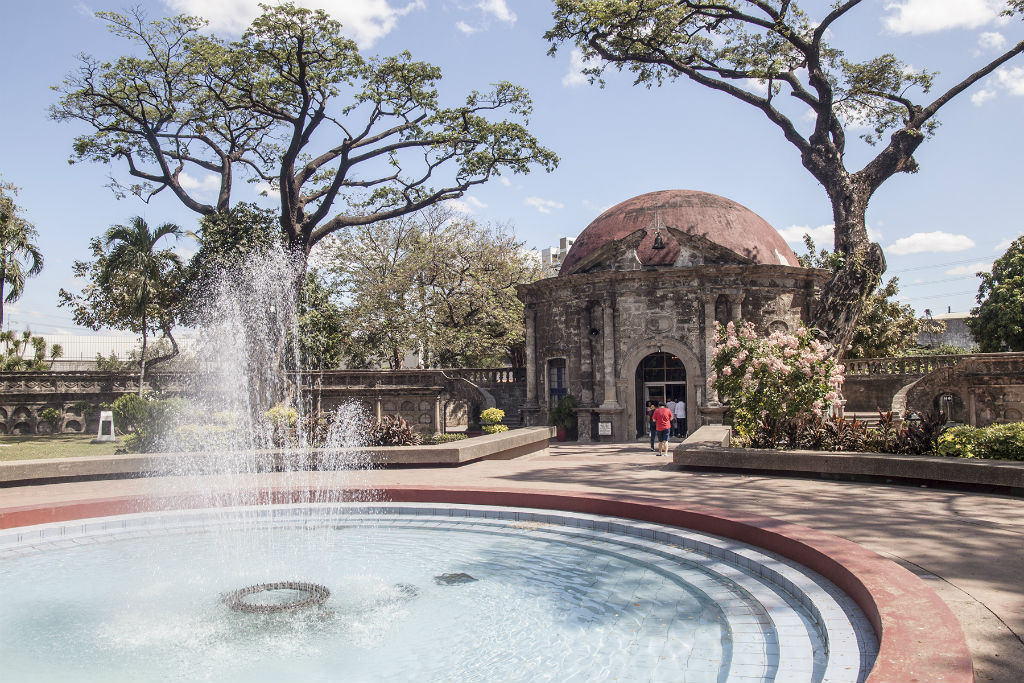For most people, Santa Ana and Paco are nothing more than two sleepy residential towns in Manila that you pass through on your way to Makati or Mandaluyong, though they’ve actually played major roles in the country’s history.
Paco once served as a refuge for religious exiles and is where executed heroes were buried. Santa Ana was one of the political centers of the ancient kingdom of Namayan, which ruled this part of the Philippines before the Spanish conquered the country in the 16th century.
Unlike Intramuros and the civic district of old Manila, Paco and Santa Ana were spared from the destructions of World War II, so both have pre-war buildings that are still intact. There are also hidden culinary finds. A three-day staycation here is guaranteed to be a feast for the mind, body and soul.
Day 1: Exploring Paco
You can find the budget-friendly Go Hotel in Paco, but we recommend staying at The Oasis Paco Park Hotel (1032 Belen St, Paco; +63 2 5212371, www.oasispark.com; from PHP3,250) next to Paco Park. It has 45 rooms, a swimming pool, and an excellent Italian restaurant and gelato bar by Italian chef Chris Locher.
After you’ve dropped off your luggage, take a pedicab or taxi to the manufacturing plant of Unilever Philippines (1351 United Nations Ave). Right across it is Manila’s Little Mumbai community, where you can find a Sikh temple and a few groceries selling Indian goods.
The Indian community in Metro Manila comprises mainly of Sindhi, Punjabis and Tamils who started migrating to the Philippines after World War II to start their own business or engage in micro financing. One of the community’s spiritual centers is Khalsa Diwan Temple (1350 UN Ave). It is open to the public, though you’ll need to remove your shoes (you can keep your socks on) and cover your head. The langar, a communal kitchen where visitors can partake of a free vegetarian meal, is on the ground floor. Upstairs is the Darbar Sahib hall, where you can view the enshrined sacred scriptures of the Sikh, placed on an elevated throne.
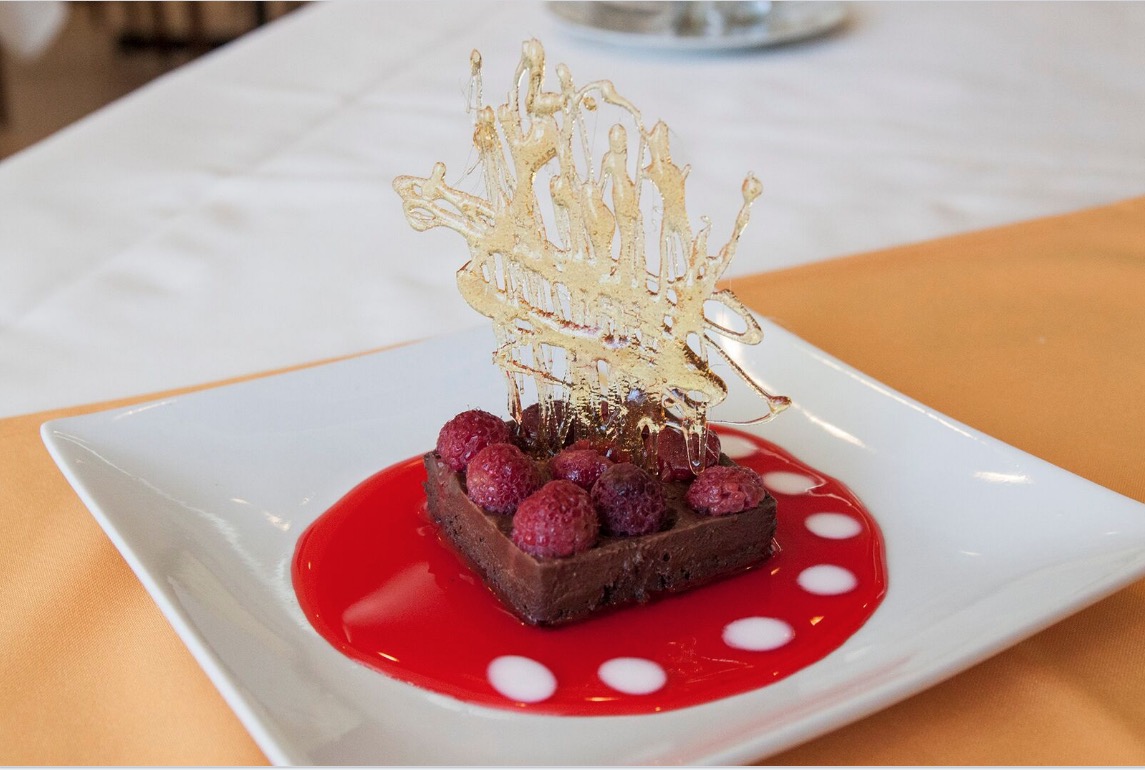
From the temple, go back to UN Avenue and head towards Paz M Guanzon Avenue. Once you cross a bridge, turn left into a gated compound, where you will see L’Eau Vive (1499 Paz Guanzon St; +63 2 5638559). This French restaurant, which means Living Water in English, is run and managed by the Missionary Workers of the Donum Dei Family, a Catholic group that ministers to the urban poor.
When the nuns and novitiates are not catechizing, they fulfill ther kitchen duties and serve up classic dishes like escargot (PHP395), sole meuniere (PHP555) and magret de canard (PHP870). Too expensive? Your budget-friendly options are fillet de dory ala Palawanaise (PHP195) and porc ala cintronelle et au coco (PHP185). Whatever your decision, don’t miss out on the chocolate croquant with raspberry (PHP185) that we found to be delightful.
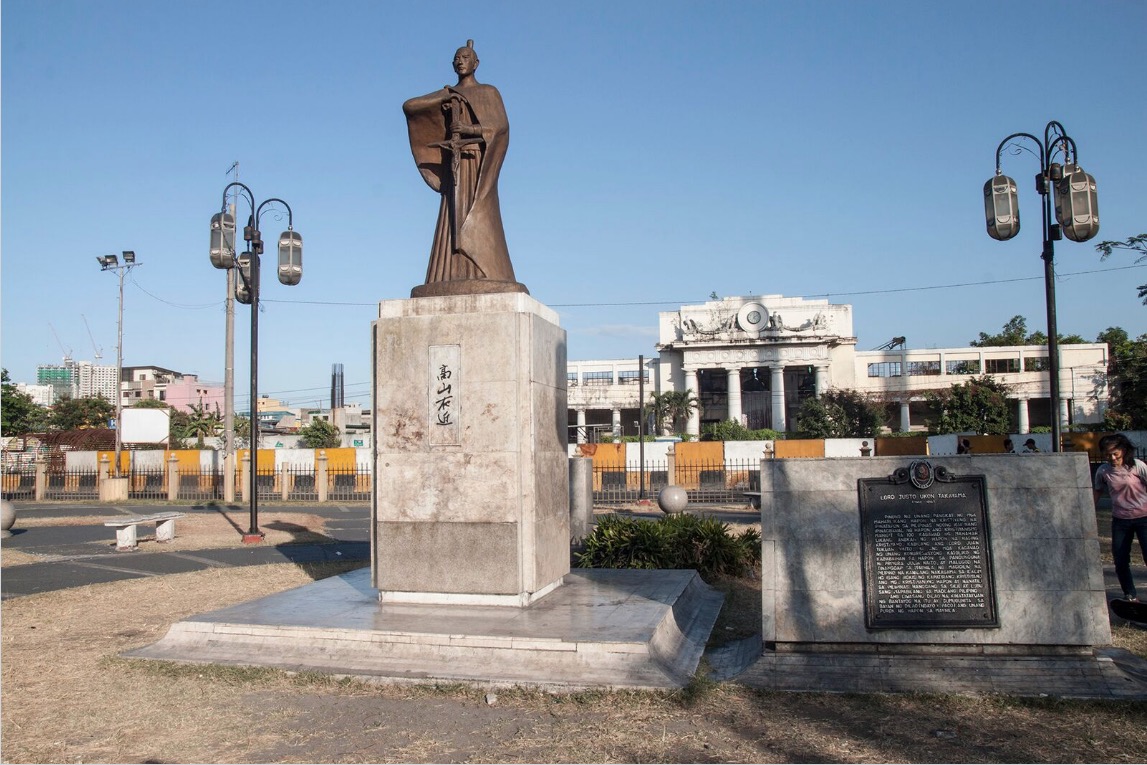
Now that you’ve fueled up, walk down President Quirino Avenue Extension toward Plaza Dilao, which doubles as the Philippine Japanese Friendship Park, since this is where Japanese migrants settled in 1760s. Look for the statue of Takayama Ukon, a Japanese samurai martyr who was exiled to the Philippines for refusing to give up his Catholic faith in exchange for maintaining his fiefdom and position in the army. He arrived in Manila with his family in 1614 and died a year later. He will be beatified this year.
Walk behind the plaza and admire the façade of what used to the Paco Railroad Station. It was built in 1915 by American architect William Parson, who also designed The Manila Hotel. In 1996, portions of Paco Railroad Station were demolished to make way for a shopping mall, but the project was eventually abandoned after conservationists lobbied against it.
Across from Plaza Dilao is another Paco landmark, the Philippine Columbian Association (Plaza Dilao; +63 2 5638501; Facebook) a club founded by Filipino students returning to the country after studying in the United States in the early 1900s. The club and its members rose to prominence in the 1920s and 1930s when they became vocal supporters of Philippine independence. These days, the club is known for its swimming pool and tennis court, only recently made available to non-members. You can drop in for a refreshing drink or light snack before you continue on your tour.
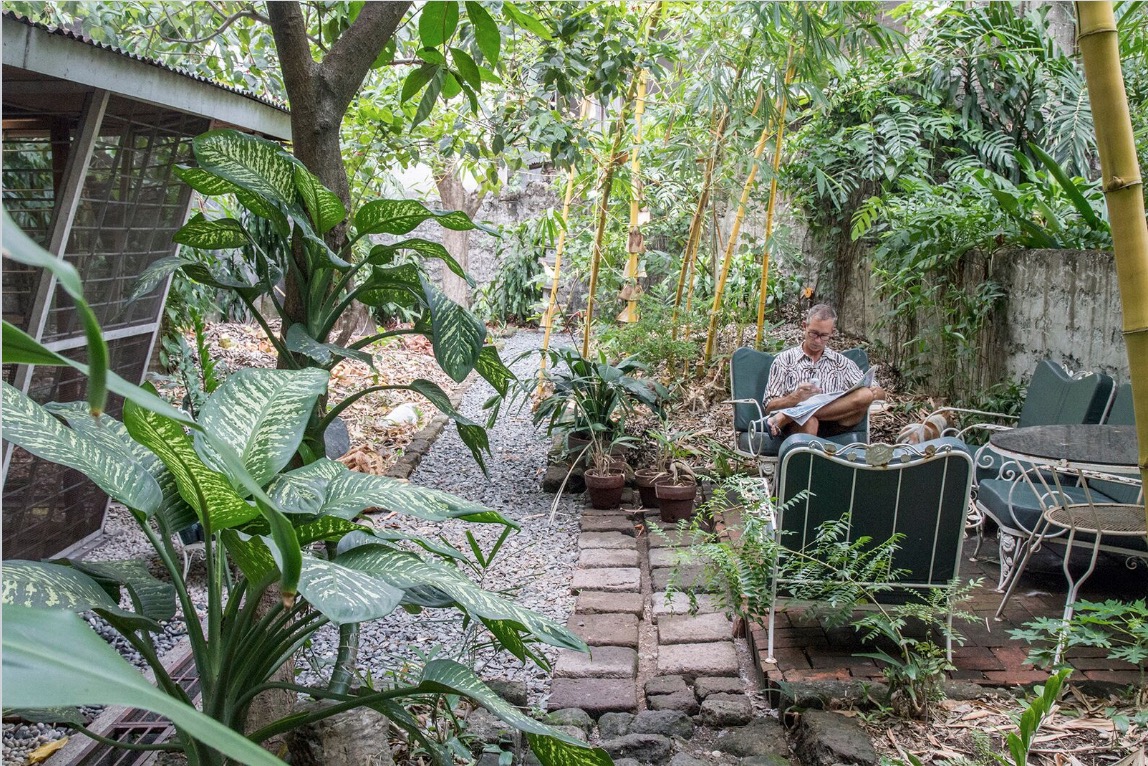
From Philippine Columbian Association, walk back to Quirino Avenue Extension and head towards Pasig River. Once you see Manila Sacramento Friendship Library, turn into Peñafrancia Street, then make another right at Peñafrancia Street Extension for Coco’s Garden (1238-B Peñafrancia St Ext; +63 916 7669170, gahdorris@hotmail.com). This wooden house, built in the late 1940s, has been converted into a stylish bed and breakfast by American expat and self-confessed Pinoyphile Greg Dorris The place was named after one of his dogs, who is fond of eating coconuts.
Greg has lived 20 years in the Philippines and it shows in his chic Filipino-inspired décor and menu. He can whip up an authentic Filipino feast with dishes like pinakbet (a mixed vegetable and pork dish) and Bicol express (pork cooked in chili and coconut cream). To view the house and try the food, book in advance by email. After your early dinner, you can linger and chat with Greg about his travels around the archipelago and local gossip.
Day 2: Exploring Santa Ana
There are two ways you can start your second day. The first one involves the Pasig River. Start with a light breakfast at your hotel then get a taxi to the Manila Boat Club (2442 Havana St; +63 920 2451830), founded in 1895 and located here since 1932. Here you can go on a free rowing trip (just make sure you leave a tip for the trainer/guide) along the Pasig River that should last an hour. Just look for Benny Radoy, the in-house rowing trainer, and tell him we sent you. You need to book in advance.
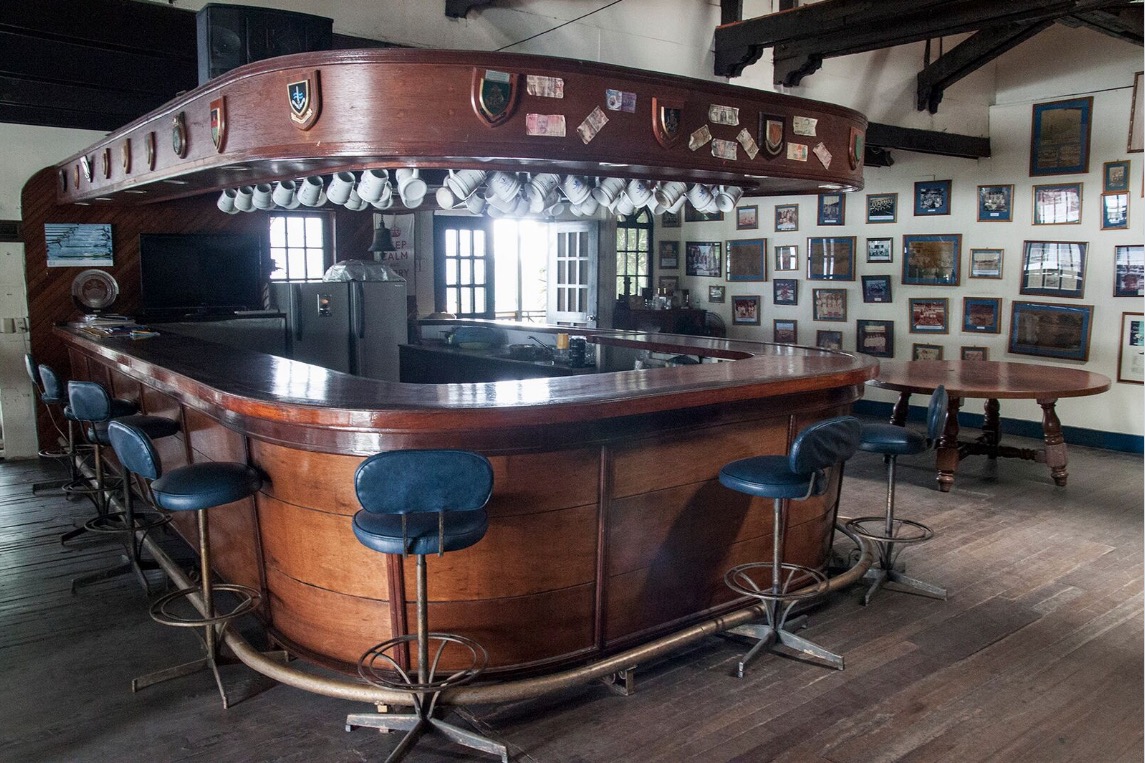
The second option is for when the weather is uncooperative or rowing’s just not your thing. Walk to Old Swiss Inn restaurant (1030 Belen St; +63 2 5262739) next to your hotel and kickstart your day with the farmer’s meatloaf with hash brown, eggs and grilled tomato (PHP285).
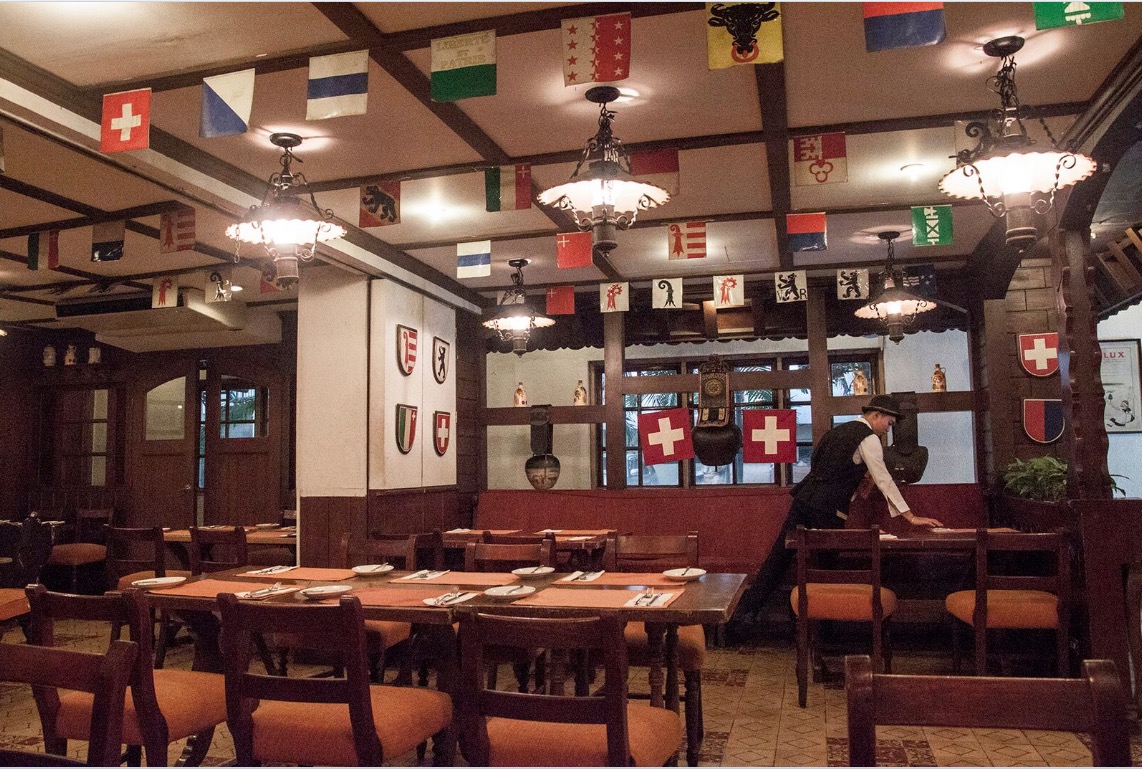
When you’re done, cross the street to Paco Park. Opened in 1820, it was designed to be a cemetery for the local elite during the Spanish colonial period. Among those buried here are three priests executed by the Spaniards for daring to suggest reform in the country: Fathers Gomez, Burgos and Zamora. Collectively known as Gomburza, the priests inspired another reformer who was also briefly buried here, national hero Jose Rizal.
The cemetery was closed in 1912 and converted into a public park in 1965. Ildefonso Santos Jr, national artist for landscape architecture, designed the park’s current layout. Many locals come here to hang out, and on late afternoons every Friday, a free classical music recital is held on the park grounds. Sunday Mass at the circular chapel dedicated to St. Pancratius is also an experience.
From Paco Park, walk three blocks down to General Luna Street and turn left at Pedro Gil (formerly Herran) Street.
This was the commercial hub of Paco during the early 1900s up till the 1940s. You can still see some of the structures that lined Calle Herran before the war, such as the former Bellevue Theater, with its Islam-inspired design, It has been repurposed as a clothing store.
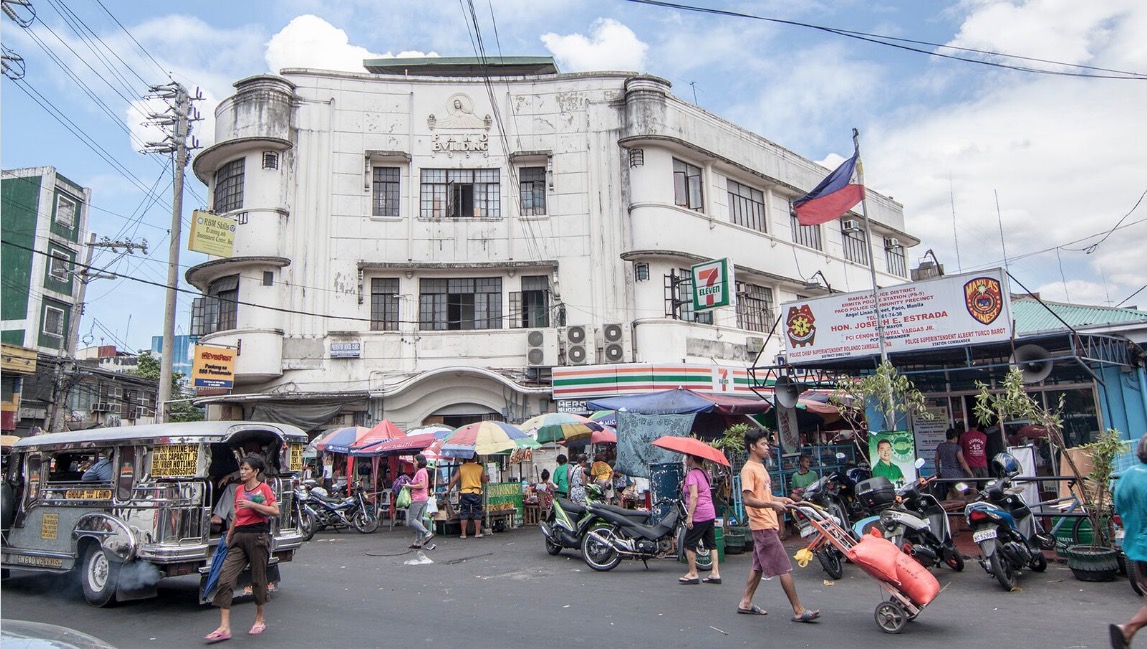
Further down is one of the few remaining Art Deco structures in Manila, the Paco Building, which was built in 1939 and site of the first De La Salle School in the country. While it is still in use today as a commercial building, it is not open to the public.
The beating heart of this commercial street is Paco Market. Built in 1911 it was designed by the same architect who made Paco Railroad Station, William Parson. Over time the condition of the market deteriorated and it wasn’t until 2010 that ABS-CBN Foundation stepped in and renovated it as part of a metrowide effort to rehabilitate esteros (or ditches). They kept things as eco-friendly as possible by using recyclable construction materials and installing an elevated roof to allow more light and air to enter the interior. The market inside is fairly typical of other busy markets around the city. One unique feature incorporated during the renovation is a community activity center in the middle, intended to be a venue for concerts and exhibits.
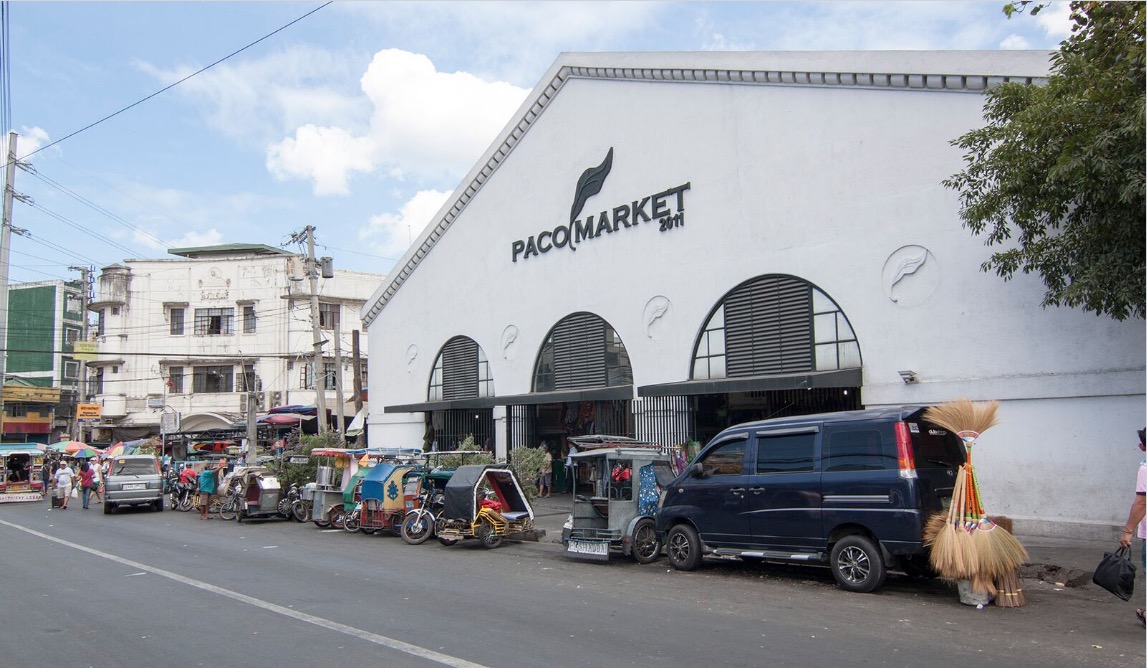
Continue walking down Pedro Gil then turn left at Paz Street. In front of the McDonald’s is the spiritual heart of the area, the Paco Church or San Fernando de Dilao Church. The church’s history mirrors that of the community. First founded in 1580 at the original site of Plaza Dilao, it was made of bamboo and nipa, like many churches built in that period. The first stone church was not constructed until 1599 and was then dedicated to the Immaculate Concepcion. In the 1790s the church was moved to its current location and rededicated to sainted King Ferdinand III of Castile.
During the 19th century, the church was leveled and rebuilt twice due to damage by earthquakes, and once after a typhoon. It was destroyed again when the Americans bombed the church during the Fil-American War. After Belgian priests of the Congregatio Immaculati Cordis Mariae took over the church in 1909, they ministered to their flock in a temporary concrete shelter nearby. The current church structure that now stands here was built in 1931. One of the things that this church is known for is its devotion to Nuestro Santo Padre Jesús del Sepulcro. It features Jesus lying in state inside an elaborate wood and glass casket. Because of that, the street in front of the church is called Santo Sepulcro.
Starting from this street make your way down to Peñafrancia Street where the Laurel House stands on the corner.
Built in 1861, the house was purchased in 1926 by Judge and Senator Jose P. Laurel. He and his family stayed there until he was appointed by the Japanese to become the country’s president during World War II. In 1955 President Laurel left the house to live in his new retirement home in Mandaluyong. In 1998, the house was declared an historic building. You can only admire the house from the outside, as visitors are not allowed inside.
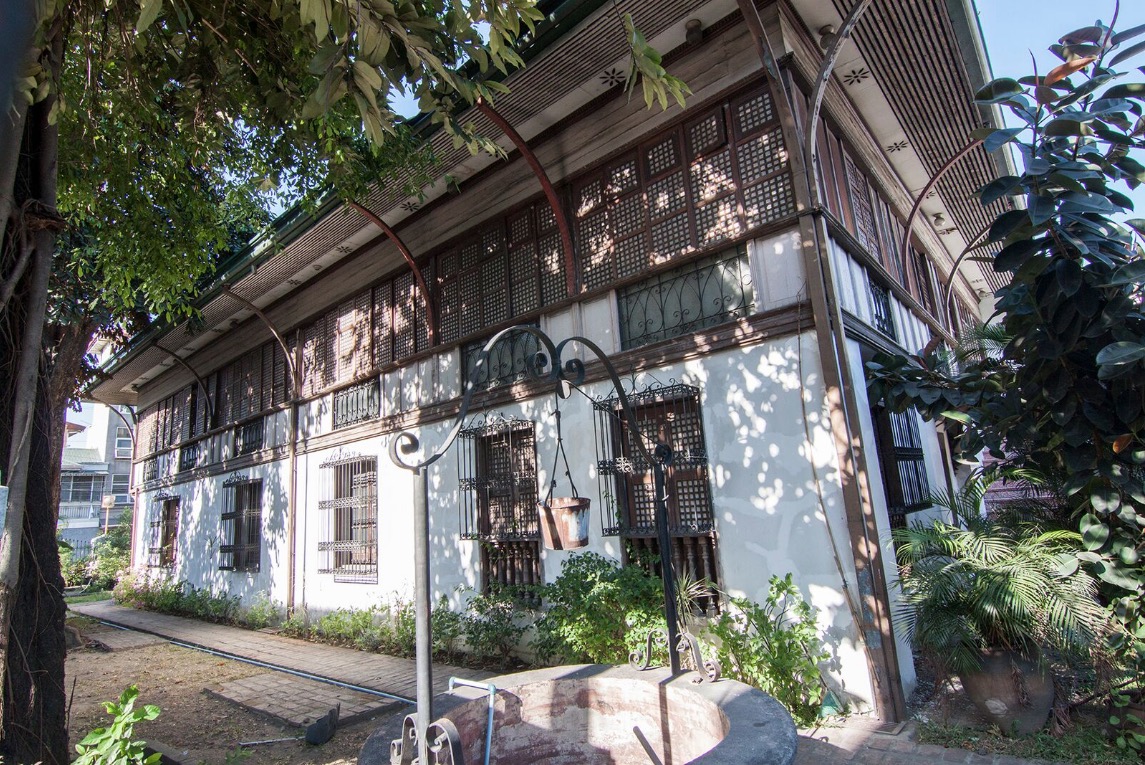
From Peñafrancia, walk back toward Pedro Gil then turn left and go straight down toward Quirino Ave.
From there you cross over to the other side of Pedro Gil St. and turn right before you reach the rail tracks. Head toward Osmeña Highway till you see a pizza restaurant. Behind it is one of Paco’s hidden finds, the New Delhi Restaurant (1418 Pres Quirino Ave; +63 2 5629160). The food here is yummy and affordable, and we love their moist yet tasty tandoori tikka chicken (PHP275). Also worth trying is their mildly spicy egg curry (PHP150).
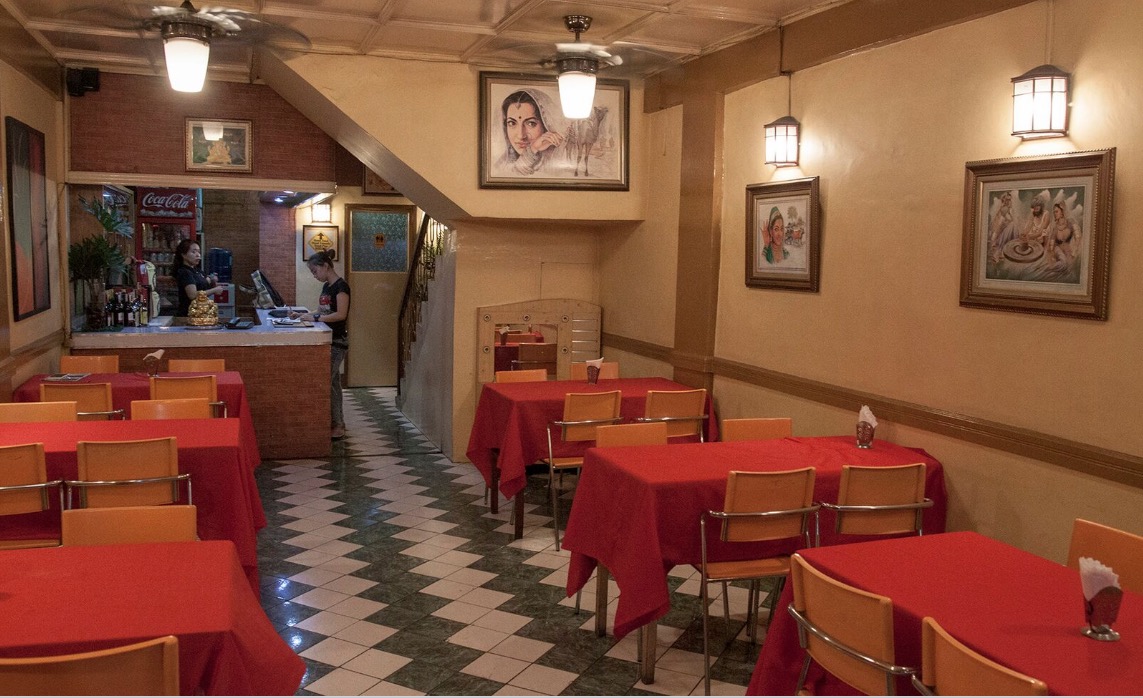
After lunch, walk back to the corner of Pedro Gil and Quirino Ave and board a jeepney toward Santa Ana. It was here that kingdom of Namayan was founded in the 12th century. Its boundary reached as far north to what is now Mandaluyong City and as far south to what is now Pasay City. Nothing remained of Namayan by the time the Franciscan monks arrived in 1578. The monks then built a small church by a brook and dedicated it and its surroundings to Santa Ana, or St. Anne, mother of the Virgin Mary.
Once you reach the Santa Ana plaza, get off in front of the public market. As it is still new, it is still bright, clean and odor free inside. It has a food hawker area offering Filipino dishes like pancit palabok.
Next door to the market is an SM Savemore. It is not every day that you will find a supermarket that acknowledges the history of its location, but this branch does just that. On one end of the structure is an open courtyard with a lone tree in the center.
When this branch was inaugurated in 2011, there was a 200-year-old Ditas tree that was at least 18 feet that stood at the center. However two years later, it was discovered that the tree was dying. Forestry experts recommended that it be cut down. A smaller and younger Dita tree now occupies the center. This is said to be third attempt in growing a tree in this spot and it is said to be thriving,
Aside from the tree, the patio of the supermarket has an enclosed space featuring the foundation of a house built in the Spanish colonial period. It may have been part of the rest house for the Good Shepherd nuns as there is a historical marker at the supermarket indicating that it once stood on the same site. Scholars and historians are still studying if there is truly a link.
From the supermarket walk back to the plaza and towards Santa Ana Church which is best known today as the Parish for the Lady of the Abandoned.
The statue of the Virgin Mary was brought here from Spain in 1717 and enshrined in the church. By this time the population in the area was growing and in 1720 it was decided that a bigger church was needed. It would move to new a location that was on a slight rise of land near the Pasig River. Construction began immediately and within five years the new church was opened to the public. Today the church appears to be remarkably well preserved despite its age.
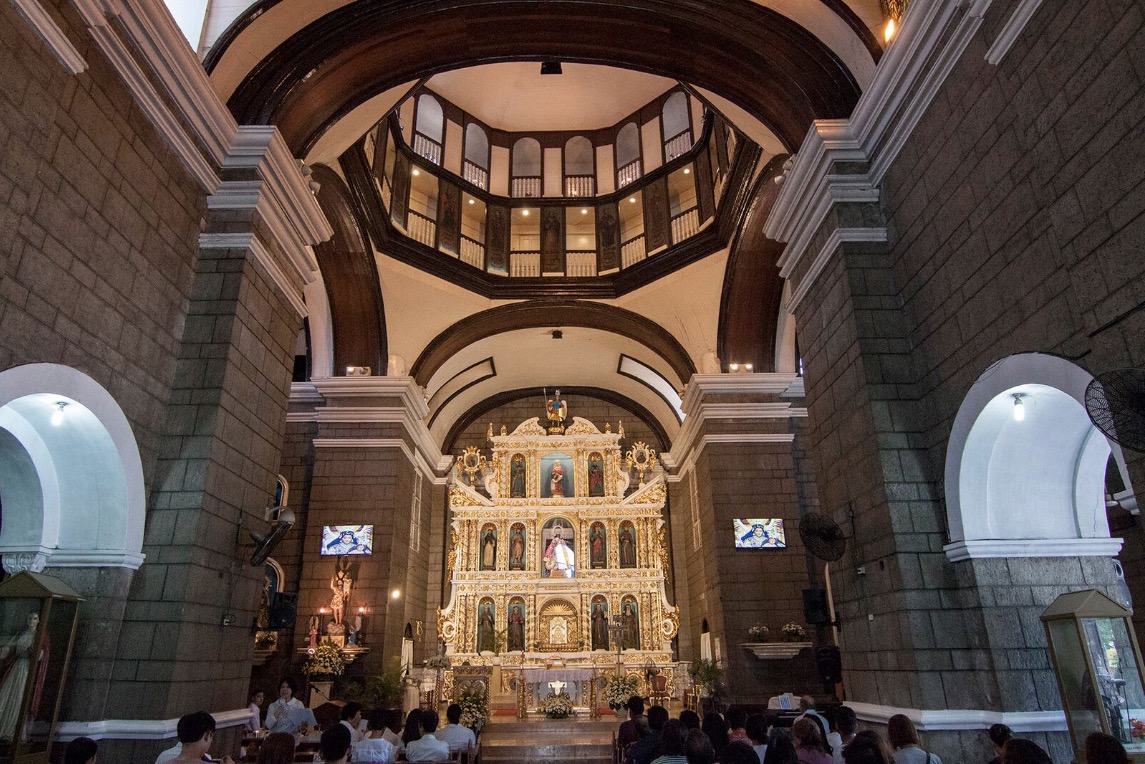
One of its original features is the Camarin, located on the second floor of the church, behind the altar, and accessible via a granite staircase from the left exit near the altar. This little jewel box of a room is where they change the dress of the image of our Lady of the Abandoned. It is a dramatic room with gilded cornice and Ming Dynasty blue and white tiles. The highlight is the painted ceiling which is believed to be as old as the church itself. Each of the painted panel focuses on an episode in the lives of Christ and Mary. It is only accessible to the public from 6am to 8am and 5pm to 7pm.
While waiting for the Camarin to open, you can check out the el Pozo de la Virgen. This little chapel at the back of the church has an underground well that is believed by its devotees to be miraculous. It was closed by health officials in the 1920s due to a typhoid epidemic. Over the succeeding decades the chapel was abandoned and was even used as a rubbish dump. But the devotees never forgot about the chapel. In 2011, with funding from Society for Cultural Enrichment, they began a project to restore it. During the restoration, the devotees were thrilled to discover that there was still water inside the well. Since then the church has agreed to open the chapel in the morning so that the devotees can come to pray and draw water from the well. As a caution, the church has advised devotees that the water can only be used externally.
It had long been speculated that the water inside the well came from a spring that was also regarded as miraculous by people from the pre-colonial era. But the similarity goes further. Like how people of Sta. Ana today would associate the well with the Our Lady of the Abandoned, people then would associate the spring with a diwata or a nymph that was said to guard it. Due to the spring’s miraculous power, people would come here to bury their dead near it.
But it wasn’t until the mid-20th century that evidence came to light that supported this hypothesis. In 1966 a digging conducted by the National Museum in the church’s courtyard yielded not only skeletons but porcelain wares dating back from the 10th to 14th century. The discoveries were exhibited at the church for a few years, before they were eventually brought to the National Museum.
Another interesting place to explore is the Taoist temple behind the church known as Pao Ong Hu. No one, not even the descendants of the founder’s temple, is exactly sure when the temple was built. But based on the oldest acknowledgement receipt of donation to the temple, it possibly dates back to sometime before 1928.
The name of the temple comes from its main deity, a 10th century Chinese judge, Bao Gong, who is famous for his impartiality. Other deities found here includes the Guanyin (Goddess of mercy) and Guangong (God of war and literature).
Even the Our Lady of the Abandoned is also shown devotion here. According to local lore this was started when a Chinese textile store owner was visited by a beautiful lady who made some selection. She then asked the store owner to meet her at the church where she can make her payment. But when the store keeper arrived, the lady was nowhere to be found. But to the shopkeeper’s surprise the statue on the altar resembled his missing customer. Instead of seeing it as a customer who flaked out on him, he chose to view it as a miraculous visit from the Virgin, so began showing devotion to her.
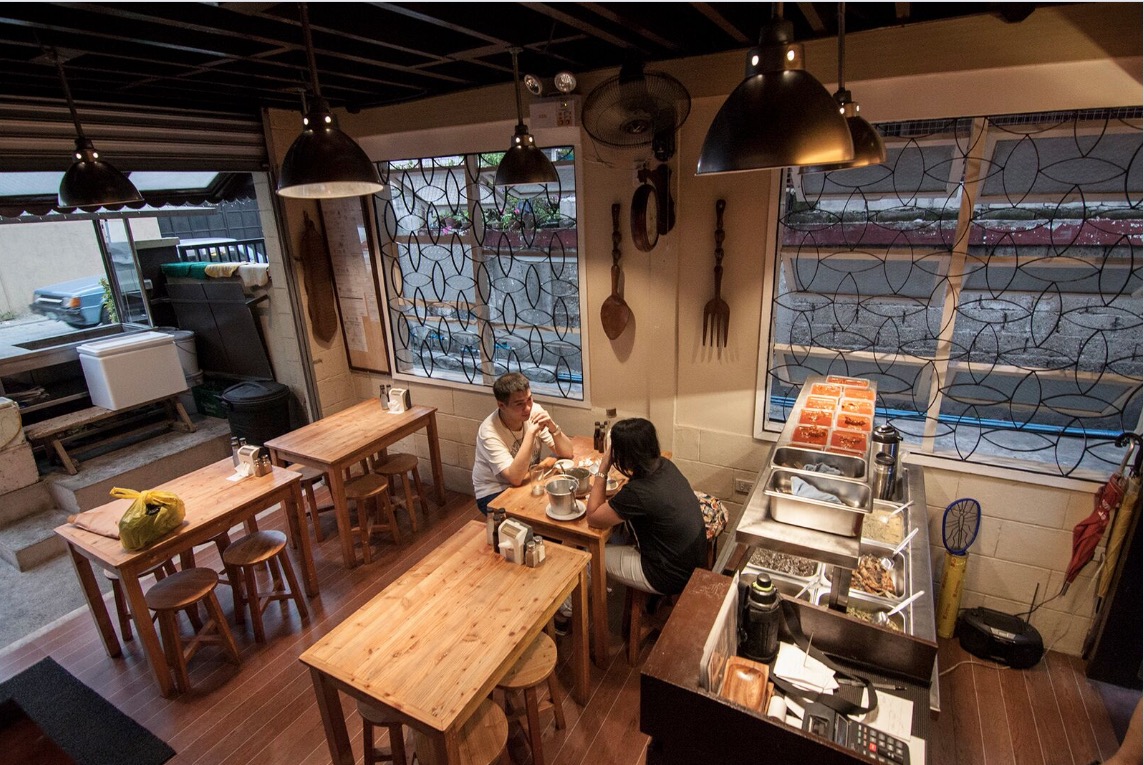
If you feel like you have scratched only the surface of Sta. Ana and wish to learn more, you can arrange a more in-depth tour with the Sta. Ana Heritage Tourism Association (call Boyet Magpale at +63 927 5177899 or +63 2 413251). Not only will they share more about the history of the district, you can even visit some of the heritage houses in the district.
Once you are done exploring the area, go back to the plaza next to the church and walk toward the end to Medel Street, then turn right at Suter Street. In this mid-20th century two-story wooden house is Teodora’s Family Recipes (2213 Suter St; +63 2 5333839). The house once belonged to Teodora Reantaso, who was known to family and neighbors for her cooking. Among her admirers was her grandson, Orlando, who later converted her house into a restaurant, where you could try for yourself the dishes she is known for, such as adobong bangus (PHP120), callos (PHP260) and twice-cooked pork adobo (PHP120).
Day 3: See more of Paco
If you think you’ve seen every interesting place of interest there is in Sta Ana and Paco, we still have a few more surprises for you.
From your hotel, walk down Apacible Street and turn left at Perez Street. There you will see the Hong Guan Taoist Temple. The traditional-style Chinese temple was built in the early 1970s by businessman and Taoist priest Benito Tan. Since it is only open every Sunday morning between 8am and 11am, it is worth dropping by just to take a look at the gardens and the interior worship hall where the Taoist deities stand guard. (Note that photography is not allowed inside the interior hall). If your timing is right, you can even visit the adjacent temple next to the main hall, as it is only open during the Chinese ghost month.
Going back to Apacible, walk down to Mahatma Gandhi Street where you will find the simply-named Hindu Temple. Since Manila’s Indian community is small, the temple ministers to both Hindu and Sikh devotees. Because of this, it is regarded as one of Manila’s Indian community center. The temple is also significant in Indian Filipino relations as one of the temple’s former priests, Giani Joginder Singh Sethi, is known to foster close ties between the communities. He encourages visits to the temple by local school children, and pioneered efforts to have sacred religious Indian texts translated into Tagalog. As with the Sikh Temple, the Hindu Temple offers free food to visitors. But this is only available on Sunday.
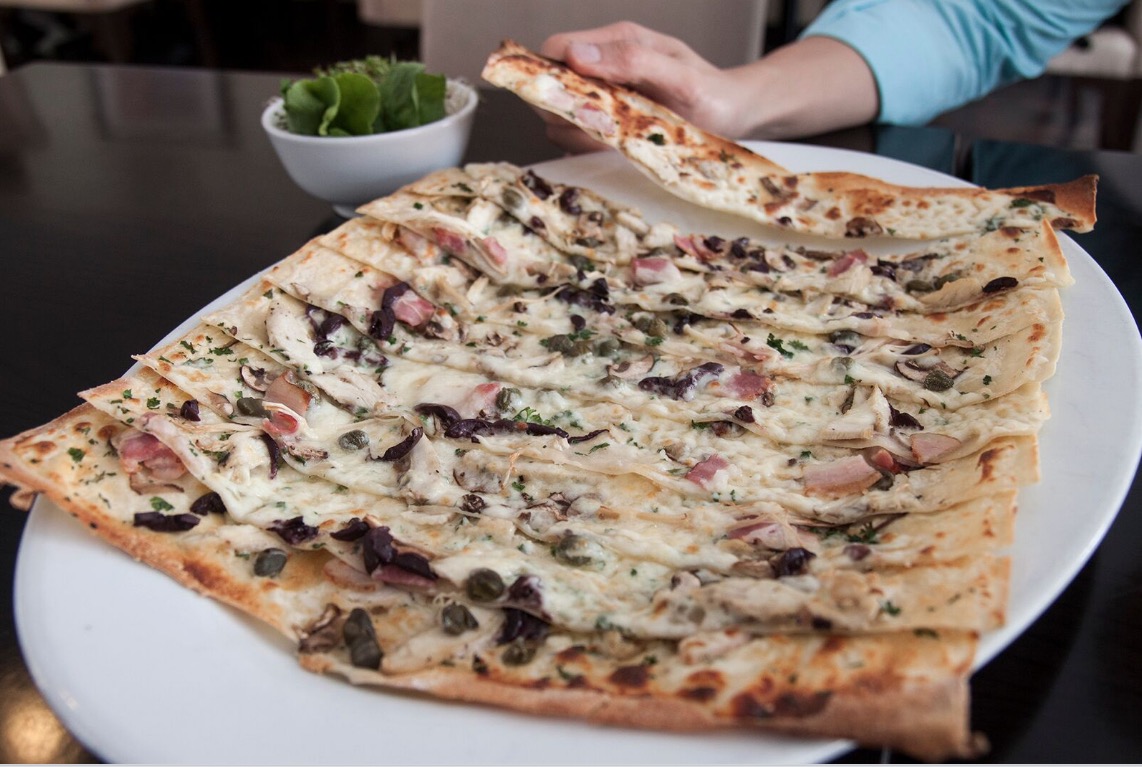
Once you are done exploring, you can go back to the hotel for a hearty Italian meal at My Kitchen by Chef Chris Locher. You need to make a reservation ahead of time (call +63 2 5212371), as the place gets busy with families on weekends. Must-orders include the rectangular thin crust pizzas that are slicedup diagonally and can be rolled up with arugula. On weekends they offer special dishes such as juicy roast chicken (PHP1,790). If you can still manage dessert there is the white chocolate panna cotta (PHP120).
